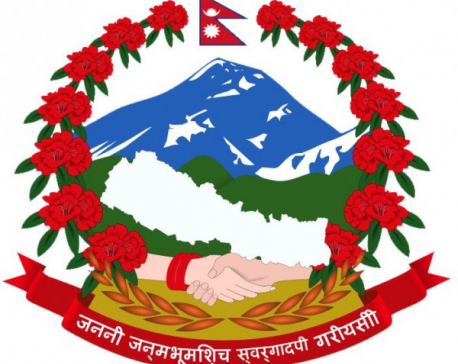
OR
Many poor families fail to get listed in poverty list of govt
Published On: July 2, 2016 03:54 PM NPT By: Sagar Ghimire | @sagarghi
Govt admits error during survey and vows to include in second round
SINDHULI, July 2: Although Rama Lama of Dobhan in Kamalamai Municipality at Sindhuli has annual income of less than Rs 20,000, his name has not been included in list of people living under poverty line. Similar is the situation of Kancha Tamang, another local. Both of them have to struggle to feed their family.
These are the cases that show how real poor are excluded in the initial data collection phase of the District Development Committee’s Identification of Poor Households Programme.
Locals blame the authorities for not being poor-friendly, which has resulted in exclusion of the population which is actually poor.
“The data has been collected on the basis of political access and power,” claimed Sundar Sarki. “The list has included mostly those households who are earning enough to feed their family. The real ones have been left out,” he said, adding that the preliminary list shows that enumerator has not included ultra-poor population from few VDCs.
Janak Kunwar of Kapilakot also holds a similar opinion. “Many well-off people including police Assistant Sub-Inspectors, head constables, and others who have well-paid jobs are also included in the list of ultra-poor people,” he said.
Local authorities admit that some errors have been noticed in the list. It has been found that there were some mistakes from enumerators who were deployed to collect the data in villages. Admitting that there are many flaws in the data of poor, an official at the District Development Committee told Republica that VDC secretaries and enumerators should take responsibilities for the faulty list.
According to him, negligence from VDC secretaries has led to inclusion of well-off families in the list. “As the list excludes many people who are actually poor, the list would be revised,” he added.
356,418 HOUSEHOLDS LISTED POOR
A total of 356,418 households residing in 25 districts of mountainous, hilly and Tarai regions have been identified as poor by the government.
The preliminary survey conducted by the Ministry of Cooperatives and Poverty Alleviation has categorized the families identified as poor into three groups. Of them, 50 percent are living in extreme poverty who are struggling to manage a square of meal a day.
Likewise, 30 per cent are somehow relatively better than the people in chronic poverty and are getting a square of meal with hardships. Similarly, remaining 20 per cent are on the verge of poverty and if their economic condition was not improved soon, they were certain to fall below poverty line.
Source of income, status of house, living condition and access to education, health and other facilities were the bases for the survey.
Karnali remains in the forefront in terms of the number of poor. This number may slightly go down during the second round of survey as complaints were registered regarding some families recognized as poor, according to Ministry Spokesperson Suresh Pradhan.
The final name list of poor will be made public after the second survey, he said. The Ministry has planned to extend the poor households identification survey to other remaining 50 districts once the study of 25 districts would complete.
"There could be error in the first round. This could be rectified in the second survey," he said.
The families recognized as poor will be given poor people identity cards soon for additional state facilities.
Earlier last week, the World Bank had warned that 45 per cent of Nepali, who are not directly poor, are vulnerable to falling into poverty. A report entitled 'Moving Up the Ladder: Poverty Reduction and Social Mobility in Nepal' made public by the World Bank Group said that the recent devastating earthquakes and trade disruptions in the wake of Tarai turmoil has exacerbated the problem.
"The recently experienced earthquake and the trade disruptions were major events," the study reveals, adding further, "but Nepalis routinely deal with a variety of smaller but higher frequency shocks that threaten their livelihoods, erode their assets and limit their ability to invest in the human capital of children." The report further states that protection from these dull disasters will not only safeguard welfare in the short run but also help them take more risk and be more enterprising.
Although remittance income as well as earnings from non-agro and agricultural sector has reduced poverty, the failure to sustain it has increased risk.
You May Like This

Govt unveils ministers’ property details; Mahaseth tops rich list
KATHMANDU, May 23: The government has unveiled the property details of Prime Minister KP Sharma Oli and other incumbent ministers... Read More...

Govt decides to provide Rs 200,000 each to families of those killed in flood
KATHMANDU, August 13: The government has decided to provide Rs 200,000 each in compensation to the families of those killed in... Read More...











Just In
- Nepal at high risk of Chandipura virus
- Japanese envoy calls on Minister Bhattarai, discusses further enhancing exchange through education between Japan and Nepal
- Heavy rainfall likely in Bagmati and Sudurpaschim provinces
- Bangladesh protest leaders taken from hospital by police
- Challenges Confronting the New Coalition
- NRB introduces cautiously flexible measures to address ongoing slowdown in various economic sectors
- Forced Covid-19 cremations: is it too late for redemption?
- NRB to provide collateral-free loans to foreign employment seekers







Leave A Comment